NCERT Solutions for Class 9 English Moments Chapter 3 – Iswaran the Storyteller
NCERT Solutions for Class 9 English Moments Chapter 3 – Iswaran the Storyteller are essential for appreciating suspense, exaggeration, and storytelling charm in the CBSE curriculum. These well-structured answers help students understand how Iswaran’s vivid imagination brings even simple incidents to life. Designed as per the latest syllabus, these solutions improve narrative analysis and creativity. Ideal for revision and practice, they enhance students’ interest in storytelling and exam performance.
NCERT Solutions For Class 9 English (Moments) – Iswaran the Storyteller – Exercise Images
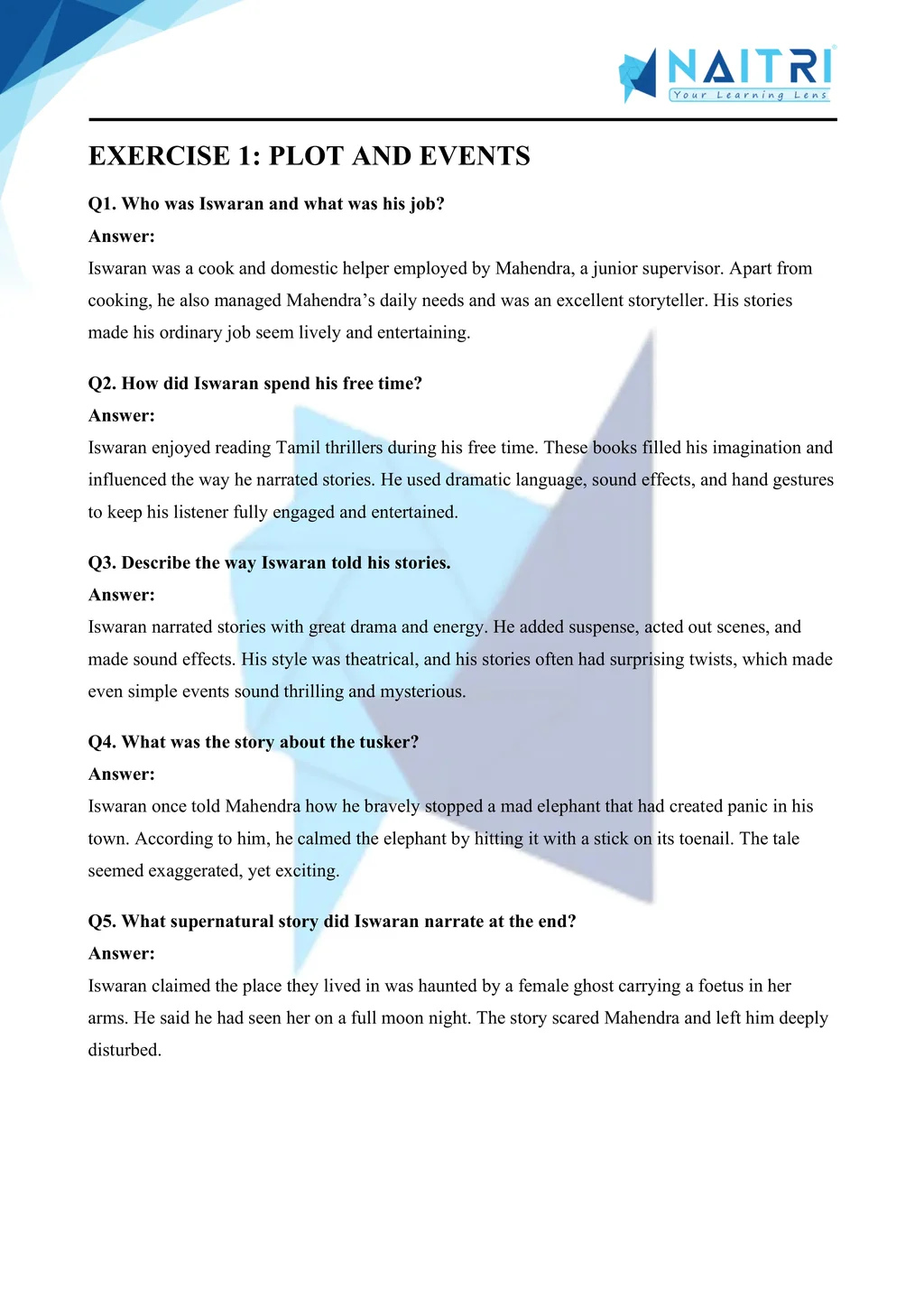
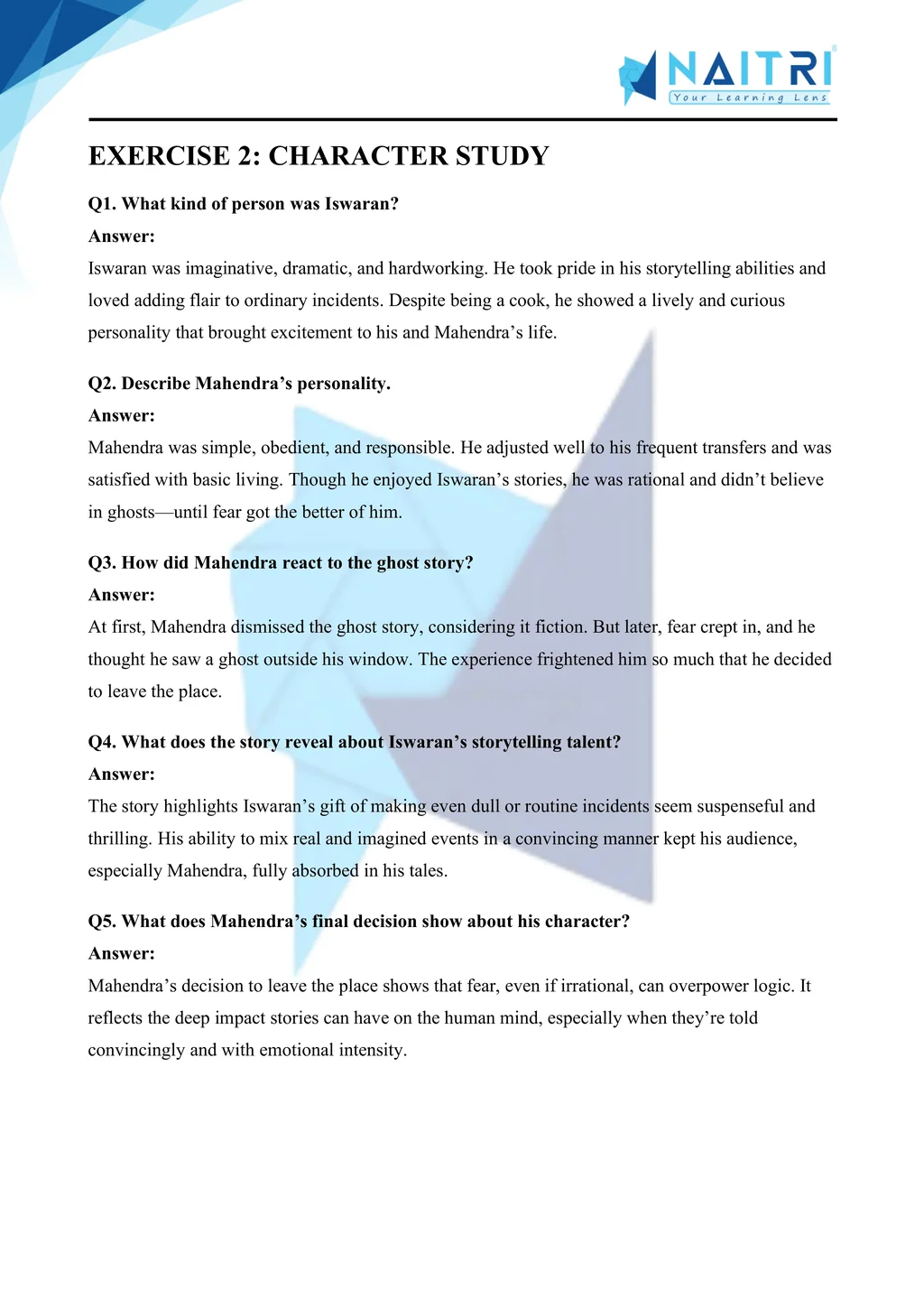
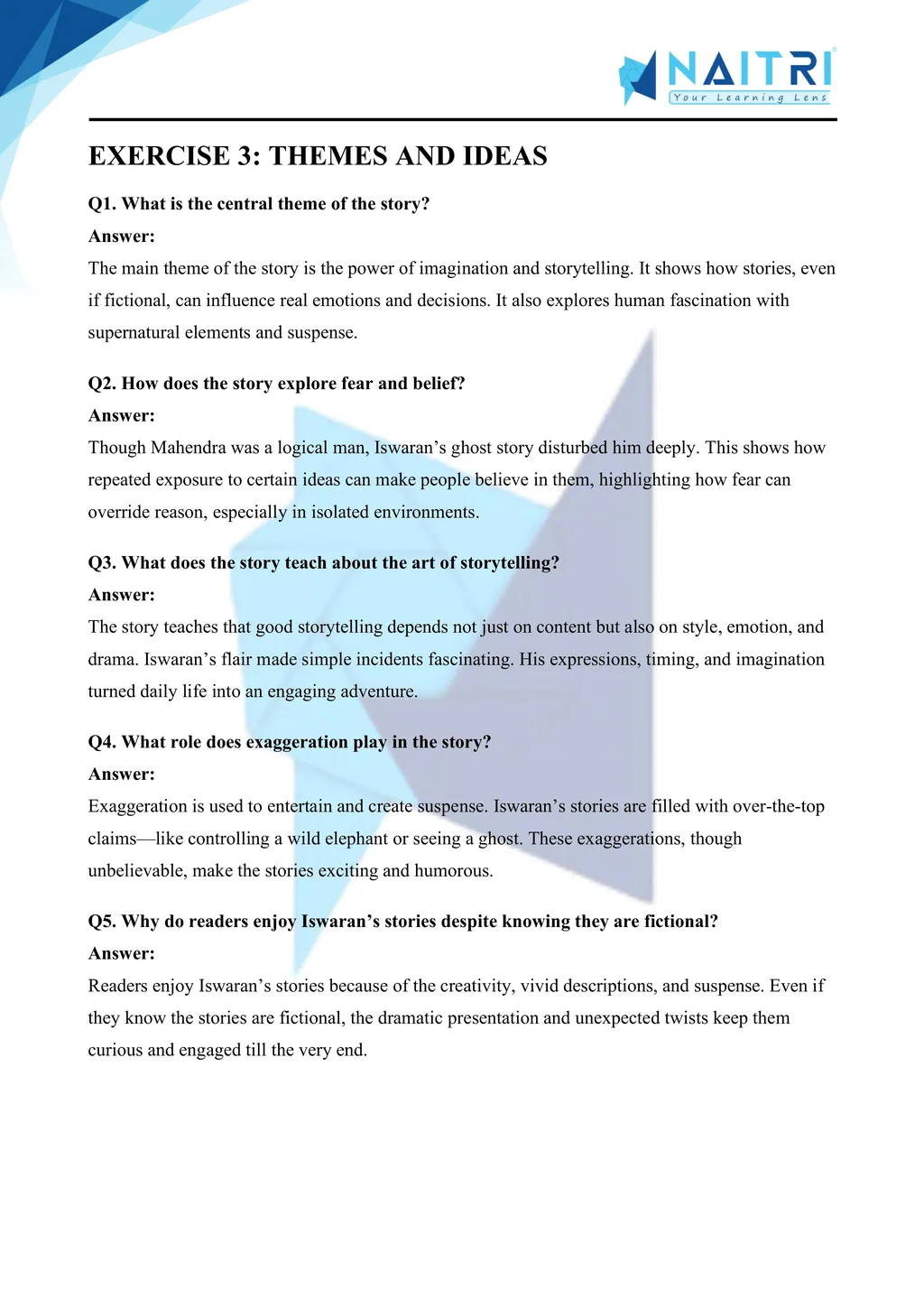
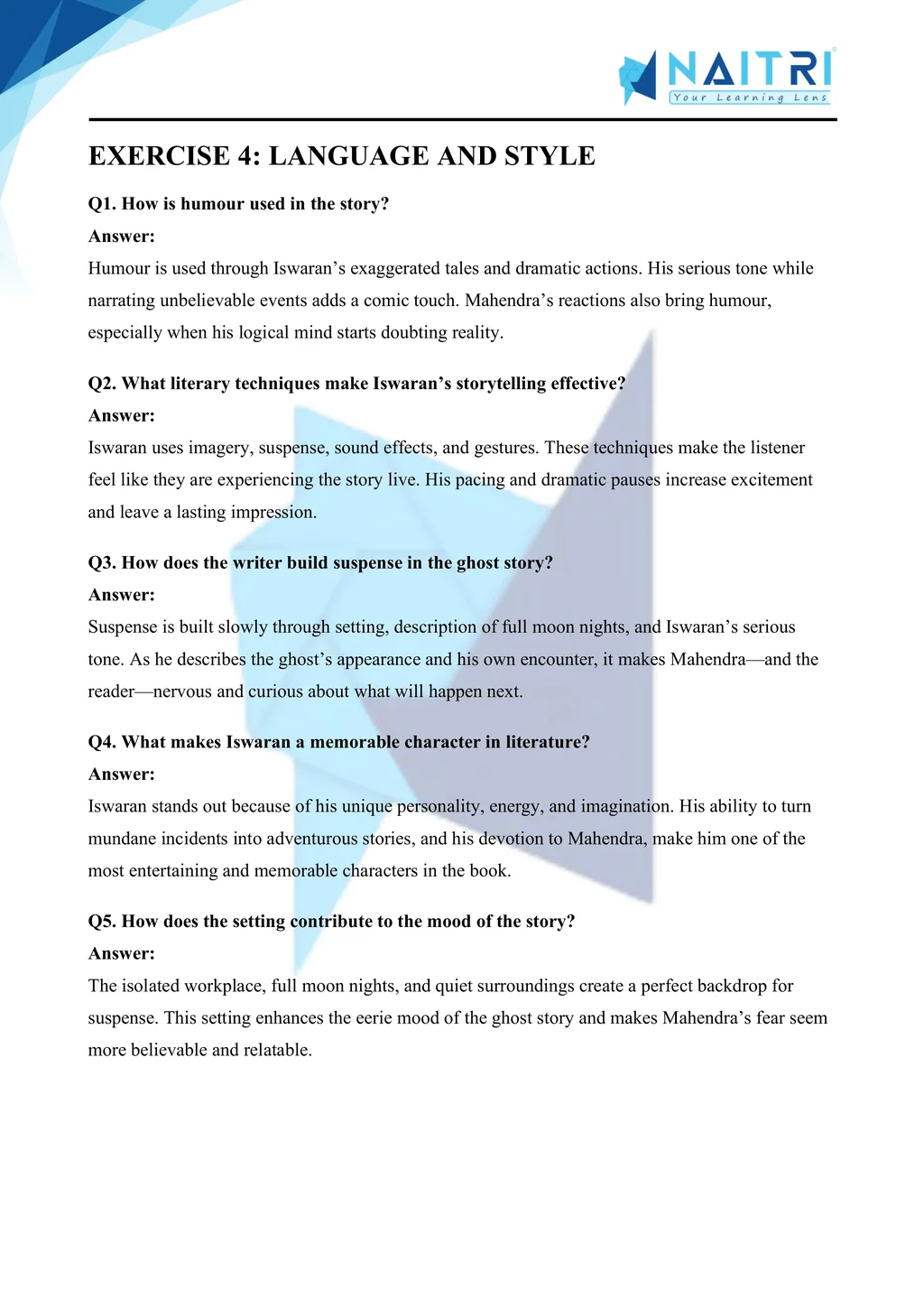
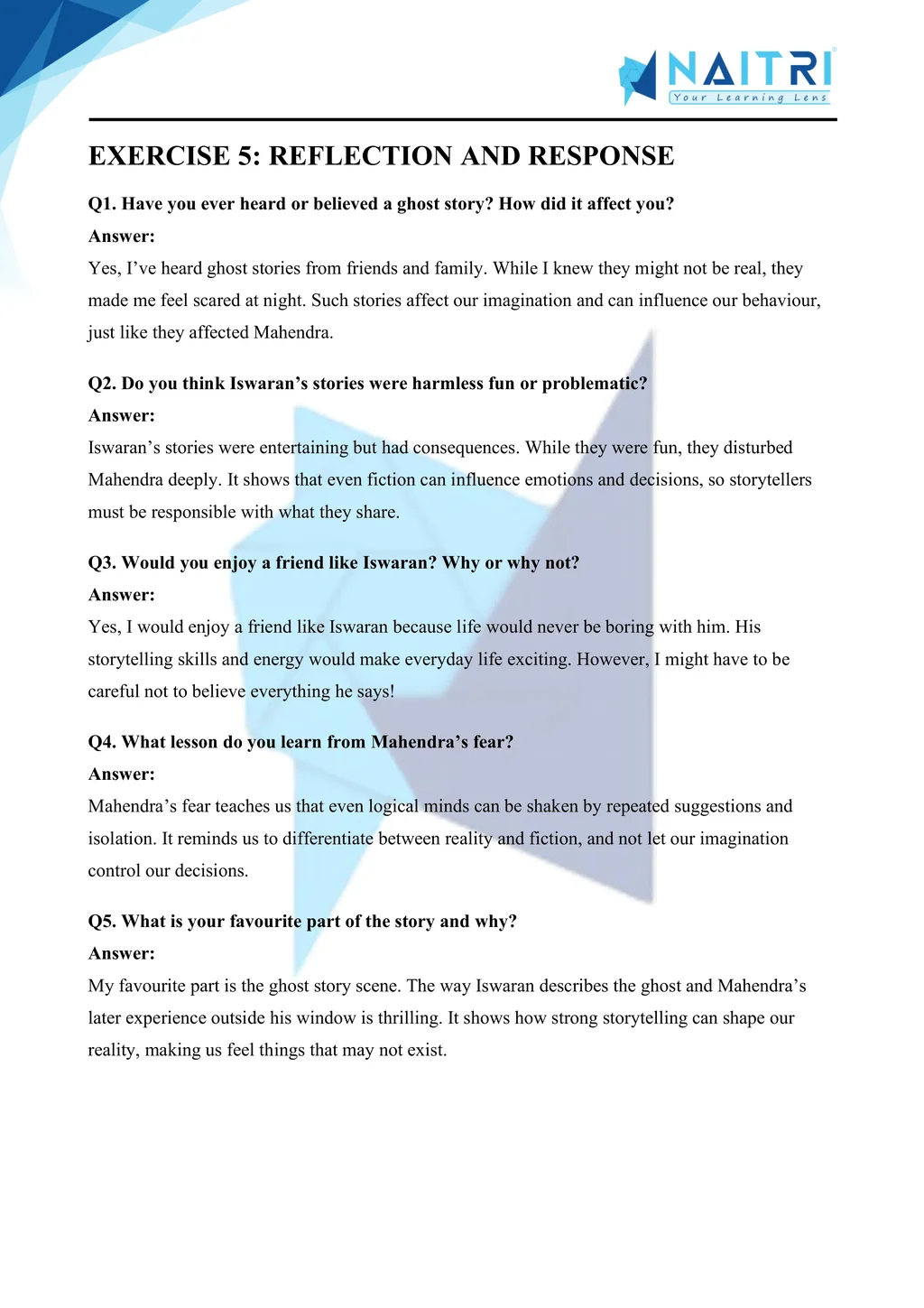
Experience English Like Never Before – With AR!
Understanding Iswaran the Storyteller is now more exciting and immersive! With the NAITRI App, you can explore engaging literature through Augmented Reality (AR). See exaggerated tales unfold, suspense grip listeners, and imagination blur with reality — right in front of you. Our AR-powered lessons make learning interactive, 3D, and fun, helping you retain concepts better and enjoy every topic.



Visualize . Interact . Understand . The future of learning is here
Iswaran the Storyteller – Important Questions with Answers
Who is Iswaran in the story?
Answer: Iswaran is a talkative and imaginative cook who works for Mahendra, often entertaining him with dramatic stories and vivid descriptions.Who is Mahendra and what is his job?
Answer: Mahendra is a junior supervisor at a company that requires him to move from place to place. He is quiet and simple.What makes Iswaran’s storytelling unique?
Answer: Iswaran uses dramatic gestures, voice modulation, and vivid imagination to make his stories engaging and believable.What kind of stories did Iswaran tell?
Answer: He often told ghost stories, supernatural tales, or exaggerated incidents from his life, always adding a touch of suspense or horror.How did Mahendra react to Iswaran’s stories?
Answer: Although Mahendra pretended to be unaffected, he often got scared or intrigued, showing that Iswaran’s storytelling had a strong impact.How does the story highlight Iswaran’s imagination?
Answer: Through his stories, like the elephant incident and the ghost woman, we see how far his imagination and creativity can go.What was the story of the elephant?
Answer: Iswaran claimed he single-handedly controlled a mad elephant with a cane by striking its toe, which shows his exaggeration and fantasy.Did Mahendra believe Iswaran’s stories?
Answer: Mahendra was often skeptical, but the dramatic storytelling and strange coincidences eventually made him doubt himself.What did Iswaran say about the ghost woman?
Answer: He claimed he had seen a ghost-like woman with messy hair and a shrill voice roaming around at night near their work site.How did the ghost story affect Mahendra?
Answer: Mahendra, though logical, started hearing strange noises and eventually became so scared that he resigned from his post.Why did Mahendra leave his job?
Answer: The fear caused by Iswaran’s ghost story and his own experience of hearing sounds at night forced him to quit.How does the story use humor and suspense?
Answer: The story blends comedy in Iswaran’s exaggerations and suspense in the ghost tale to keep readers both entertained and curious.Is Iswaran reliable or not? Give reasons.
Answer: Iswaran is not entirely reliable as he often exaggerates or invents parts of his stories for effect, though he’s a good narrator.What role does suspense play in the story?
Answer: Suspense builds up with each of Iswaran’s tales and culminates in Mahendra’s personal ghostly experience, keeping the reader on edge.What is the central idea of the story?
Answer: The story shows how imagination and storytelling can influence even rational minds and blur the line between reality and fiction.How is the story of the ghost connected to Mahendra?
Answer: After hearing Iswaran’s tale, Mahendra begins to experience supernatural events, proving the power of suggestion and fear.What does the story say about superstition?
Answer: It shows how even a logical person like Mahendra can fall prey to superstitions when influenced by fear and stories.How does Iswaran’s personality help the story?
Answer: His dramatic, confident, and imaginative nature adds charm and humor, making the story lively and engaging.Describe Mahendra’s character briefly.
Answer: Mahendra is disciplined, logical, and simple, but becomes vulnerable when exposed to Iswaran’s ghostly tales.What impact did Iswaran have on Mahendra’s life?
Answer: Iswaran’s stories disrupted Mahendra’s peace, ultimately leading him to resign from a stable job due to fear.What does the story tell us about human psychology?
Answer: It highlights that humans can be influenced by strong emotions like fear, even if they are rational or educated.How does the setting add to the story’s mood?
Answer: The remote, lonely work sites provide the perfect backdrop for Iswaran’s spooky tales and Mahendra’s eventual fear.What literary devices are used in the story?
Answer: The author uses humor, suspense, exaggeration, and vivid imagery to make the narrative engaging and entertaining.What makes Iswaran a memorable character?
Answer: His eccentric behavior, passionate storytelling, and ability to create fear or humor make him unforgettable.Summarize the moral of the story.
Answer: The story teaches us to be careful of overactive imaginations and how words can influence minds, even changing someone’s actions completely.
Iswaran the Storyteller is about a cook who entertains his master with exaggerated, dramatic stories. His flair for suspense and supernatural elements leaves the listener both amused and amazed. The story celebrates the power of imagination and storytelling, while also offering comic relief and a lighthearted narrative tone.
Download Naitri App
Easy, Visual Learning — Right on Your Phone
Learn with Augmented Reality! The Naitri app makes CBSE and MP Board concepts interactive and fun — even in low-resource settings. Watch lessons, complete homework, take tests, and track progress — all in one place. Anytime. Anywhere.
Available on








